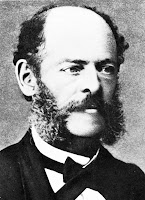 The Cave of Altamira is located near the town of Santillana del Mar in Cantabria, Spain. The cave was declared World Heritage Site by UNESCO in 1985 and it is famous for its Upper Paleolithic cave paintings featuring drawings and poly-chrome rock paintings of wild mammals and human hands.
The Cave of Altamira is located near the town of Santillana del Mar in Cantabria, Spain. The cave was declared World Heritage Site by UNESCO in 1985 and it is famous for its Upper Paleolithic cave paintings featuring drawings and poly-chrome rock paintings of wild mammals and human hands.
The site's special relevance comes from the fact that it was the first cave in which prehistoric cave paintings were discovered. When the discovery was first made public in 1880, it led to a bitter public controversy between experts, which continued into the early 20th century, as many of them did not believe prehistoric man had the intellectual capacity to produce any kind of artistic expression. The acknowledgement of the authenticity of the paintings, which finally came in 1902, changed forever the perception of prehistoric human beings.
 |
| Marcelino de Sautuola |
The French specialists, led by Gabriel de Mortillet and Emile Cartailhac, were particularly adamant in rejecting the hypothesis of Sautuola and Piera, causing their findings being loudly ridiculed at the 1880 Prehistorical Congress in Lisbon, due to the supreme artistic quality, and the exceptional state of conservation of the paintings, Sautuola was even accused of forgery and fraud. A fellow countryman maintained that the paintings had been produced by a contemporary artist on Sautuola's orders.
It was not until 1902, when several other findings of prehistoric paintings had served to render the hypothesis of the extreme antiquity of the Altamira paintings less offensive, that the scientific society retracted their opposition to the Spaniards. That year, Emile Cartailhac emphatically admitted his mistake in the famous article, "Mea culpa d'un sceptique", published in the journal L'Anthropologie. Sautuola, having died 14 years earlier, did not live to enjoy his rehabilitation and his triumph against the skeptics.
In 2012, further uranium-thorium dating research was published, supporting an older age for portions of the art, including one claviform image at 35,600 years old.
Further information: http://museodealtamira.mcu.es/





